As someone who used to work in university research, it is deeply ingrained in my nature to observe and record what I see, and also, when necessary, to count things (I once spent six years counting weed seedlings). All for the greater good of course as this meticulous sort of research is the basis for understanding a great deal about our natural world. So counting the different types of wildlife that visits or lives in my garden is second nature to me and that inevitably means that I keep lists. Birds, butterflies, moths and dragonflies in particular are observed and their details logged but the bird list here has been firmly stuck on 79 for quite a while. These are birds that have visited the garden, not simply flown over – that of course is a separate list entirely! Recently though one of my favourite birds became our 80th visitor. Great-spotted woodpeckers are very common in my local area and we see several every day – they bring their young along to the feeders as soon as they can fly in summer and I have a soft spot for these youngsters with their little pink caps. But the Green Woodpecker is a different matter. This was a very common bird in my garden back in Oxfordshire and a real favourite of mine, but sadly never seen here in the 10 years of making this garden. The Yaffle, to give it it’s old country name, is green and yellow with red on the crown of the head and nape of the neck – a wonderful colour combination. It makes a loud and distinctive ‘laughing’ noise – think Professor Yaffle in the children’s program Bagpuss. It is not inclined to drum on trees with its beak as a great-spotted woodpecker does. The green woodpecker also has very different feeding habits from its largely black and white cousin, feeding mainly on ants, so it is more likely to be seen on the ground, and doesn’t visit garden bird feeders. My recent new bird was heard ‘laughing’ from around the trees here and eventually spotted on the short grass outside my office window. A very worthy number 80!

Buddleia is a plant that is well-known for its ability to attract a variety of insects, including butterflies, some moths – especially the wonderful hummingbird hawk-moth – and many types of bee, but it is also excellent for a range of other small invertebrates and many small fly species bringing a whole different dimension to its wildlife value in any garden. In July and August in the garden here we always have a variety of juvenile warblers – generally chiff chaff, willow warbler, whitethroat and blackcap. These young birds feed around the garden in a variety of places, especially in the thick hedges that surround the garden, and also in our apple trees and the densely planted flowering borders where many small insects can be found. Once the Buddleia is well in flower though, this multi-purpose shrub is the most likely place to find the juveniles of our local warblers as the flowers attract such a variety, and quantity, of small flies. These are clearly a very important part of the diet of these young birds and they spend a lot of time flitting about between the branches, picking up the tiny insects that are feeding amongst the flowers. Most shrubs that are recommended for birds in the garden are those with berries, and in the next few months blackbirds and thrushes will increasingly be finding food amongst the rowans, cotoneasters and hawthorns here – the wild cherries have already all been eaten. But we rarely think of our insectivorous birds when planning to plant wildlife friendly shrubs, yet Buddleia has no equal where warblers, spotted flycatchers and tits are concerned. My own preference is for the variety Lochinch which has mid to pale mauve flowers and a sweet honey scent. My shrub is cut back hard every February as it flowers on the new year’s growth. This practice ensures that it has plenty of flowers all through the summer, when the larger butterflies including red admiral and painted lady are around, but especially when young warblers are feeding up for their autumn migration.

For almost twenty years I have taken part in the British Trust for Ornithology’s Garden BirdWatch programme for both my garden in Oxfordshire and my current garden in Shropshire. As a very keen birder it is one way of doing a bit of birdwatching every day – and the more you look the more you find! My garden in Oxfordshire had, over 15 years, a total of 57 species from the most common tits and sparrows to the more unusual including stonechat and tufted duck. Here we are in a rural situation and unusual birds drop in all the time. Ring ouzel, tree pipit, cuckoo, pied flycatcher and tree sparrow have all put in appearances and seeing these less common birds is always a great thrill. Counting these less common birds for the BirdWatch scheme is easy, but it is far more difficult to keep track of the everyday birds such as blue and great tits. My strategy is to count the blue tits for example and note the maximum number I see at any one time. Counting again the next day may reveal fewer of that species or more – the larger number is recorded. In reality the actual number is a great deal more than you would ever see at one time, but these figures do over time give an indication of changes in numbers of individual species in our gardens which is very valuable data. Recently I have had the opportunity to get a more accurate picture of the robins here. Having seen three adults plus one Juvenile Robin, I was able to record four birds. However I began to photograph the juveniles visiting the feeders on one particular day and the degree of spottiness of their plumage gave me an opportunity to make comparisons and thus identify individuals. I was surprised to see that there were four youngsters in varying stages of spottiness so I can count seven robins here, although there are probably many more. If I were able to identify individuals for other species such as blue tits in a similar way and then scale up my records I might begin to understand why the bird feeders empty so quickly!

Over the years we have lived here the number of species of butterfly we see in the garden has built up fairly quickly to 23. This included all the usual species I would expect to see in a rural garden, with one or two lovely extras including dark green fritillary and white-letter hairstreak. Others I hoped for including marbled white have sadly not found us yet but I grow their larval food plants and keep my fingers crossed. Recently though we did have a new species. Small and large skipper have appeared over the last few years and apart from distinguishing between these two I never really examine them too carefully. However a recent photograph taken of a skipper feeding on my lavender bank made me look a little closer. Essex Skipper is similar to small skipper in almost every way, except that the tips of its antennae are black rather than brown. This small difference is easily overlooked, plus this butterfly is most common in the south and east of the country. My skipper seemed to be most definitely an Essex and after checking it out with a few butterfly experts, it was pronounced to be just that. A message to the Shropshire county recorder for moths and butterflies revealed that he had been alerted to several in the south of Shropshire this summer. My garden is the perfect place for this little butterfly, having a large wildflower meadow with several of the species of grass on which their caterpillars feed, plus a bank of birds-foot trefoil which here, after spending a sunny afternoon chasing them around, seems to be one of their favourite nectar plants along with the red and white clovers. A further search around the garden revealed several adults of this species. Essex skipper was only identified as a species separate from the small skipper in 1899 as the two are so similar and its increase in range is thought to have come about in part through the planting of motorway embankments with native grasses. This has given the species a network of corridors along which to spread. It is good to see such a pretty, tiny butterfly extending its range in this way. We can all give it a helping hand by planting native wildflower meadows with native grass species, plus some of its nectar sources too.

Butterflies continue to dominate the garden here and now we have Peacocks on the Buddleia and other plants around the borders and the meadow. Although it is wonderful to see this large colourful butterfly, I have to say I am missing the equally beautiful Small Tortoiseshell of which I have only seen a handful. In addition to the butterflies though it has been a good few weeks for moths. I run a moth trap here when the weather is good (warm, overcast and still nights are the best) and then spend rather too much time identifying them all over the next few days when I have a spare moment! The results of this activity can be seen here. Not a huge number of species so far but that is largely as a result of my inexperience as a ‘mother’ – that is, someone who is interested in moths (as with ‘birder’), not a woman with children, although I am that too! Anyway, moths are beautiful and fascinating insects and I enjoy the identification process even though it is at times frustrating. Help is usually at hand in the form of friends who are far more experienced than I am but there is always a little buzz of excitement when I find a new species here. It means the garden habitat is improving all the time. The last few trapping sessions have produced several new species including Buff Tip, Rosy Rustic, Dark Marbled Carpet and Orange Swift. The names themselves are pretty enough but the moths are even prettier. Their camouflage is often extraordinary and colours can range from bright red and yellow to subtle shades of green. If you have only ever seen moths as boring brown fluttery things, see if there is a moth-trapping event near you and your eyes will be opened to another beautiful world.

Although I appreciate all the wildlife we see in the garden here, there is the odd creature I would prefer not to have. Our previous garden in Oxfordshire was invaded by rabbits, and although we had carefully fenced them out, neighbours had not been as thorough and rabbits managed to find their way in. Only the vegetable garden was safe as a second line of defence was erected. When we arrived here, although there was not a single Rabbit around at that time, we rabbit-proofed the whole garden with netting to keep them out from the start as we grow vegetables for our own consumption, not for little rabbits however cute they are – and they really are cute as this picture shows. Recently though our defences have been breached. Baby Bunny has managed to find a way in. He is certainly sweet to look at and quite confiding so I am not minding him too much, but he will soon grow into a lettuce-munching monster, so he must go. I am setting a live trap for him, tempting him with carrot tops and other tasty rabbit treats, but no luck so far. I’m hoping he will soon succumb though, so he can be reunited with his rabbit friends on the outside of the garden. In the past I have been able to catch small rabbits with a blanket – creeping up on them – stretched out blanket in my hands – which can be gently thrown over them. Their natural reaction is to sit very still in this sort of situation so it is then possible to scoop them up gently, still wrapped in the blanket, and deposit them on the other side of the fence with their rabbity friends. I am watching and waiting in anticipation of catching this little one soon.


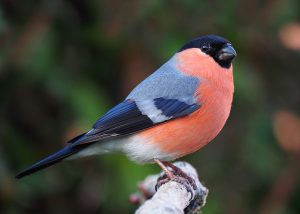
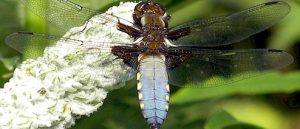
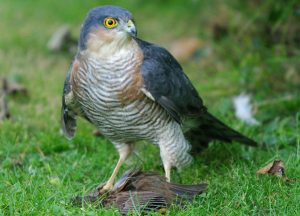
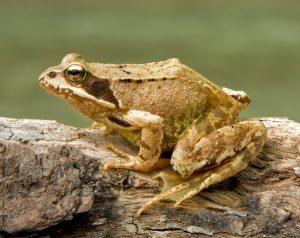
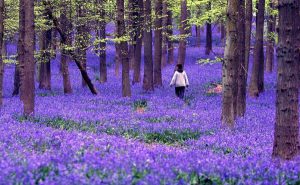
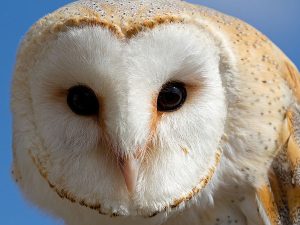
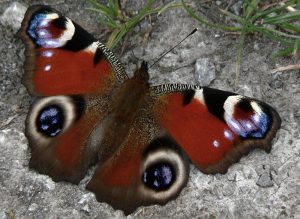
5 Comments
I live in a semi small urban area of a fairly rural part of Bedfordshire; I am told that hedgehogs are in decline. We have regular sightings of a large one in our garden and occasionally a second but we used to see many. We have deliberate holes in our fences and our neighbours do the same.
Is there more we could be doing and is it necessary
Hedgehogs have essentially been wiped out from the “semi small urban” town in Yorkshire where I used to live. It upset me so much that it was high on the list of reasons that I left.
I understand that their demise is a combination of roadkill (plus the shock of near-miss traffic encounters), increased concrete and panel fencing (as the hedgehogs can’t forage around freely nor find a safe spot to sleep, and (and this is a bit less certain) the increasing use of slug pellets in gardens.
The latter is suspected due to the toxins passing up the food chain. It is borne out also by urban areas being infested with slugs and snails – more slug and snail pellets applied results in the death of their predators, so more slugs and snails.
Banning slug pellets, and ensuring that if concrete and panel fencing is used that it has occasional access holes is another one of those relatively easy and ecologically beneficial measures that governments could easily but never will implement. As to banning cars…
Andrew
I have been logging the arrival and departure of swifts in my town for the past 5 years – they arrived on the 4th may this year – within a day or two of the last dates I recorded in previous years – but look set to depart a full week earlier – most have already gone with a just a few in the skies this morning.
In ”The Snow Geese ” by William Fiennes there is a short chapter on swifts – his father used to do what I do and log their comings and goings – he used to expect them on 23rd May each year ………..climate change is clearly having an effect.
Joining up our gardens is one of the most important things we can do for hedgehogs, but just as important, if not more so, is to garden organically which benefits all insectivores from hedgehogs to spotted flycatchers and of course swifts! Hedgehogs are actually not great consumers of slugs or snails although this is a widely held view. These creatures only make up about 10 per cent of a hedgehog’s diet, whereas beetles for example constitute more than a quarter. Caterpillars and earthworms provide another 40 per cent or so. Making sure our gardens have plenty of natural food for hedgehogs is probably as important as allowing them to roam between our plots which gives them access to a wider foraging area.
What a lovely, well written article by someone who obviously has a valuable lifetime of experience – more, please! I have learned a few things I didn’t know before and has given me some ideas as to where I want to go with a naked patch in my own garden, planting wise.
Thank you for sharing your joy with us xx